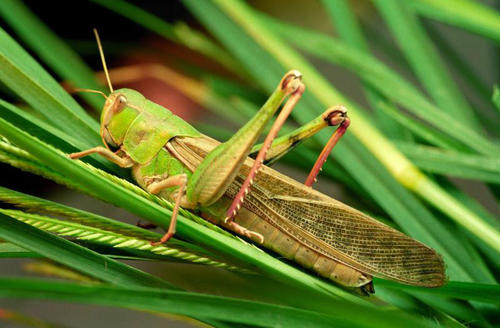SunSirs: Locusts Cannot Hold Inventory, Chinese Cotton Price Drops below the Line of 12,000 yuan/ton
June 18 2020 08:43:25 SunSirs (Linda)
According to SunSirs data statistics, as of June 16, Chinese lint cotton spot market average price reported 11,956 yuan / ton, a decrease of 152 yuan / ton from last Tuesday, a decrease of 1.25%; a year-on-year decline of 15.15%. Locusts threaten to beat inventory growth. The weather in Xinjiang in June favored the growth of new cotton. New outbreaks have triggered market concerns about the decline in cotton demand, and cotton prices have been reduced under pressure.
New domestic cotton grows better. According to the reaction of the cooperatives in Hami, Xinjiang, as of June 15, the local temperature is high, the cotton is growing well, and the growth progress is different. The current growth progress is basically the same as last year. At the same time, it is expected that in mid-June, the temperature in most cotton regions in northern Xinjiang will be slightly lower, while that in southern and eastern Xinjiang will be slightly higher. Except for the slightly more northern part of Aksu region, the remaining most cotton regions in Xinjiang will have less weather conditions. Cotton growth is generally more favorable. In addition, there are no diseases and insect pests in cotton fields.
Indian cotton stocks are expected to double. According to the analysis of the US Department of Agriculture's forecast of supply and demand in June, in 2019/20, with cotton production hitting a nearly six-year high, consumption decreasing by 4 million bales, and a sharp decline in exports, India’s cotton inventory is expected to double year-on-year in 2020/21.
The new outbreak of COVID-19 has brought a certain blow to market confidence. Judging from the main rebound situation of Zhengzhou cotton, which rose to 12,000 yuan/ton and there was insufficient upward momentum. Consumption reduction and export pressure on textile orders have always been market restrictors. From the end of May to the beginning of June, Zhengzhou cotton began to rebound with an increase of around 500 yuan/ton. With the news of the weather and locusts being subverted, the growth of cotton stocks is again on the table, and cotton prices have begun to fall.
The price of yarn and cotton continued to decrease, and the profits of textile enterprises decreased further. Last week, the prices of foreign cotton yarns rose slightly, ranging from 0-52 yuan/ton, and the price gap between Chinese and foreign yarns decreased, increasing the market competitiveness of domestic yarns. The yarn cotton price gap continues to shrink, about 160 yuan/ton less than the previous week. From the perspective of raw material costs, the profitability of the yarn mill has shrunk.
According to statistics from SunSirs, the average price of cotton yarn for 32S ring spinning and knitting in Shandong reported 20,875 yuan/ton, and the price remained stable. The spread of foreign epidemics has greatly reduced the orders of yarn export-oriented enterprises, and the pressure on production and operation is heavy. In addition, there was a difference in the factory start time this year. Some companies had a large gap in raw material costs. In March and April, cotton prices fell, but some companies still used cotton stocks, and the cost did not drop. The manufacturer said that if the price was lowered, Part of the cotton yarn can be sold, but the enterprise will be unable to bear further losses. As a result, cotton yarn quotations are firm, and rising cotton prices are deteriorating the spinning mill's living environment.
SunSirs analysts believe that from the 16th Zhengzhou cotton’s main contract opened lower and went higher, and finally closed flat, the market between the new epidemic and the rise in US consumption game. Fundamentally, supply and demand are still in an unbalanced state. It is difficult for cotton prices to rise in a short period of time. At the same time, the market is concerned about the new COVID-19 trend, and the bears occupy the position. It is expected that the cotton price will go down slightly.
If you have any questions, please feel free to contact SunSirs with support@sunsirs.com.
- 2024-01-03 SunSirs: The Intentional Planting Area of Cotton in China in 2024 Decreased
- 2023-10-25 SunSirs: The Quotation for Imported Cotton Increased Significantly Yesterday
- 2023-05-29 SunSirs: Cotton Market Rose First and then Fell This Week (5.22-5.27)
- 2023-05-24 SunSirs: In April 2023, China's Cotton Cloth Exports will be 532 Million Meters
- 2023-05-22 SunSirs: Cotton Prices may be Stable and Relatively Strong in the Short Term



